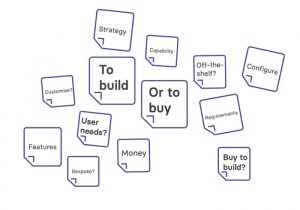 Information System
Information System
To buy or to build?
You have several options for sourcing the information system that will host your registry – buy one that has already been developed for a similar purpose or to build one specifically for the purpose (either in-house or using an external partner). Whichever option you choose, it is essential to involve users at all stages of the process to ensure its success. This is because solutions that are appealing from a technical perspective often prove less than ideal for actual users of the data.
Options for developing your system
The first step in deciding between the various options is to find out what is available for purchase and how close those come to fulfilling your needs. It is very unlikely that a product will meet all of your requirements, so some customization is likely to be needed. The time and cost of making these adjustments must taken into account. It is also important to factor in the cost of any license for and maintenance of the product. So, while an off-the-shelf solution may have lower initial costs, running costs over the longer term may be higher. Off-the-shelf solutions have advantages, too, however, such as having already been tried and tested, taking less time to deploy, having existing manuals and resources, and having a central team to provide training and support. Before purchasing your product, you may find it useful to speak to others who have worked with the developer, used the product, and experienced the support.
If you can’t find a product that meets your requirements and you have the technical expertise and capacity within your team, building a bespoke system in-house may be a good solution. This will mean that the people building your system are in the best position to know what will be expected of it, and future development of the system can be done by your own team. The challenges of this approach should not be underestimated, however. It is easy to be overambitious in terms of scale and timeline, too relaxed about specifications, testing, and quality assurance, and unrealistic about the amount of support required to maintain the system over the longer term. Careful project management will be essential, ideally by someone with information technology expertise to challenge plans and progress.
When no product meets your requirements, and you don’t have the in-house expertise or capacity to develop your system, you will need to consider working with an external partner. Although this means you will be dependent on that company for the delivery of your solution, you can manage much of the risk through careful selection of the partner and a detailed specifications of the project.
Developing your system
If you opt for either of the ‘build’ solutions, you will almost certainly find your information systems experts following the Software Developing Life Cycle (SDLC) approach:
- Planning and requirement analysis
- Defining software requirements
- Designing the product architecture
- Building or developing the product
- Testing the product
- Deploying the product in the market and maintenance
As user requirements drive the development process, it is essential that future users of your registry are actively involved at all stages of this process.
There is also an international standard to guide developers through the process of software development and maintenance – ISO/IEC 12207.
